Land-Use Conflict Identification from the Perspective of Construction Space Expansion: An Evaluation Method Based on ‘Likelihood-Exposure-Consequence’
Abstract
:1. Introduction
2. Data Sources and Identification Model
2.1. Overview of the Study Area and Data Sources
2.2. LEC-Based LUC Identification Model
2.3. Model Parameter Determination
2.3.1. Probability of LUCC (Likelihood)
2.3.2. Restrictions on LUCC (Exposure)
2.3.3. Loss of ESV (Consequence)
- Basic ESV
- Vertical ecological process modification
- Horizontal ecological process modification
3. Result
3.1. LEC Quantitative Results and Analysis
3.2. Potential LUC
4. Discussion
5. Conclusions
Supplementary Materials
Author Contributions
Funding
Institutional Review Board Statement
Informed Consent Statement
Data Availability Statement
Acknowledgments
Conflicts of Interest
References
- Zhu, Y.-G. Environmental impacts of rapid urbanization in China: A showcase of recent research developments. Environ. Sci. Pollut. Res. 2012, 19, 1351. [Google Scholar] [CrossRef] [PubMed]
- Shen, L.; Gunson, A.J. The role of artisanal and small-scale mining in China’s economy. J. Clean. Prod. 2006, 14, 427–435. [Google Scholar] [CrossRef]
- Liu, X.; Guo, P.; Guo, S. Assessing the eco-efficiency of a circular economy system in China’s coal mining areas: Emergy and data envelopment analysis. J. Clean. Prod. 2019, 206, 1101–1109. [Google Scholar] [CrossRef]
- Yuan, J.; Bian, Z.; Yan, Q.; Pan, Y. Spatio-Temporal Distributions of the Land Use Efficiency Coupling Coordination Degree in Mining Cities of Western China. Sustainability 2019, 11, 5288. [Google Scholar] [CrossRef] [Green Version]
- Liu, L.; Zhou, J. Analyzing Ecological Functions in Coal Mining Cities Based on RS and GIS. Pol. J. Environ. Stud. 2018, 27, 1165–1174. [Google Scholar] [CrossRef]
- Sikuzani, Y.U.; Boisson, S.; Kaleba, S.C.; Khonde, C.N.; Malaisse, F.; Halleux, J.-M.; Bogaert, J.; Kankumbi, F.M. Land cover dynamics around mining sites along urban-rural gradient of Lubumbashi city (DR Congo) Description of the subject. Biotechnol. Agron. Soc. Et Environ. 2020, 24, 14–27. [Google Scholar]
- Yu, Y.; Chen, S.-E.; Deng, K.-Z.; Wang, P.; Fan, H.-D. Subsidence Mechanism and Stability Assessment Methods for Partial Extraction Mines for Sustainable Development of Mining Cities-A Review. Sustainability 2018, 10, 113. [Google Scholar] [CrossRef] [Green Version]
- Fuhrmann, N.L. O primado do reconhecimento sobre a redistribuição: A origem dos conflitos sociais a partir da teoria de Axel Honneth. Sociologias 2013, 15, 170–203. [Google Scholar] [CrossRef] [Green Version]
- Zou, L.; Liu, Y.; Wang, J.; Yang, Y.; Wang, Y. Land use conflict identification and sustainable development scenario simulation on China’s southeast coast. J. Clean. Prod. 2019, 238. [Google Scholar] [CrossRef]
- Sze, M.N.M.; Sovacool, B.K. Of fast lanes, flora, and foreign workers: Managing land use conflicts in Singapore. Land Use Policy 2013, 30, 167–176. [Google Scholar] [CrossRef]
- Reuveny, R.; Maxwell, J.W.; Davis, J. On conflict over natural resources. Ecol. Econ. 2011, 70, 698–712. [Google Scholar] [CrossRef]
- Brown, G.; Raymond, C.M. Methods for identifying land use conflict potential using participatory mapping. Landsc. Urban Plan. 2014, 122, 196–208. [Google Scholar] [CrossRef]
- Steinhäußer, R.; Siebert, R.; Steinführer, A.; Hellmich, M. National and regional land-use conflicts in Germany from the perspective of stakeholders. Land Use Policy 2015, 49, 183–194. [Google Scholar] [CrossRef]
- Ioja, C.L.; Nita, M.R.; Vanau, G.O.; Onose, D.A.; Gavrilidis, A.A. Using multi-criteria analysis for the identification of spatial land-use conflicts in the Bucharest Metropolitan Area. Ecol. Indic. 2014, 42, 112–121. [Google Scholar] [CrossRef]
- Valle Junior, R.F.; Varandas, S.G.P.; Sanches Fernandes, L.F.; Pacheco, F.A.L. Groundwater quality in rural watersheds with environmental land use conflicts. Sci. Total Environ. 2014, 493, 812–827. [Google Scholar] [CrossRef]
- Dietz, K.; Engels, B. Analysing land conflicts in times of global crises. Geoforum 2020, 111, 208–217. [Google Scholar] [CrossRef]
- Petrescu-Mag, R.M.; Petrescu, D.C.; Azadi, H.; Petrescu-Mag, I.V. Agricultural land use conflict management—Vulnerabilities, law restrictions and negotiation frames. A wake-up call. Land Use Policy 2018, 76, 600–610. [Google Scholar] [CrossRef]
- Zhou, D.; Lin, Z.; Lim, S.H. Spatial characteristics and risk factor identification for land use spatial conflicts in a rapid urbanization region in China. Environ. Monit. Assess. 2019, 191. [Google Scholar] [CrossRef]
- von der Dunk, A.; Gret-Regamey, A.; Dalang, T.; Hersperger, A.M. Defining a typology of peri-urban land-use conflicts—A case study from Switzerland. Landsc. Urban Plan. 2011, 101, 149–156. [Google Scholar] [CrossRef]
- Cieślak, I. Identification of areas exposed to land use conflict with the use of multiple-criteria decision-making methods. Land Use Policy 2019, 89, 104225. [Google Scholar] [CrossRef]
- Adam, Y.O.; Pretzsch, J.; Darr, D. Land use conflicts in central Sudan: Perception and local coping mechanisms. Land Use Policy 2015, 42, 1–6. [Google Scholar] [CrossRef]
- Delgado-Matas, C.; Mola-Yudego, B.; Gritten, D.; Kiala-Kalusinga, D.; Pukkala, T. Land use evolution and management under recurrent conflict conditions: Umbundu agroforestry system in the Angolan Highlands. Land Use Policy 2015, 42, 460–470. [Google Scholar] [CrossRef]
- Zhou, D.; Xu, J.; Lin, Z. Conflict or coordination? Assessing land use multi-functionalization using production-living-ecology analysis. Sci. Total Environ. 2017, 577, 136–147. [Google Scholar] [CrossRef]
- Kim, I.; Arnhold, S. Mapping environmental land use conflict potentials and ecosystem services in agricultural watersheds. Sci. Total Environ. 2018, 630, 827–838. [Google Scholar] [CrossRef]
- Kuusaana, E.D.; Bukari, K.N. Land conflicts between smallholders and Fulani pastoralists in Ghana: Evidence from the Asante Akim North District (AAND). J. Rural Stud. 2015, 42, 52–62. [Google Scholar] [CrossRef]
- Bircol, G.A.C.; Souza, M.P.d.; Fontes, A.T.; Chiarello, A.G.; Ranieri, V.E.L. Planning by the rules: A fair chance for the environment in a land-use conflict area. Land Use Policy 2018, 76, 103–112. [Google Scholar] [CrossRef]
- Anderson, N.M.; Ford, R.M.; Williams, K.J.H. Contested beliefs about land-use are associated with divergent representations of a rural landscape as place. Landsc. Urban Plan. 2017, 157, 75–89. [Google Scholar] [CrossRef]
- Pacheco, F.A.L.; Varandas, S.G.P.; Sanches Fernandes, L.F.; Valle Junior, R.F. Soil losses in rural watersheds with environmental land use conflicts. Sci. Total Environ. 2014, 485, 110–120. [Google Scholar] [CrossRef]
- Karimi, A.; Hockings, M. A social-ecological approach to land-use conflict to inform regional and conservation planning and management. Landsc. Ecol. 2018, 33, 691–710. [Google Scholar] [CrossRef]
- Valle Junior, R.F.; Varandas, S.G.P.; Pacheco, F.A.L.; Pereira, V.R.; Santos, C.F.; Cortes, R.M.V.; Sanches Fernandes, L.F. Impacts of land use conflicts on riverine ecosystems. Land Use Policy 2015, 43, 48–62. [Google Scholar] [CrossRef] [Green Version]
- Lin, J.; Li, X. Conflict resolution in the zoning of eco-protected areas in fastgrowing regions based on game theory. J. Environ. Manag. 2016, 170, 177–185. [Google Scholar] [CrossRef] [PubMed]
- Zhang, Y.; Long, H.; Tu, S.; Ge, D.; Ma, L.; Wang, L. Spatial identification of land use functions and their tradeoffs/synergies in China: Implications for sustainable land management. Ecol. Indic. 2019, 107. [Google Scholar] [CrossRef]
- Kienast, F.; Huber, N.; Hergert, R.; Bolliger, J.; Moran, L.S.; Hersperger, A.M. Conflicts between decentralized renewable electricity production and landscape services—A spatially-explicit quantitative assessment for Switzerland. Renew. Sustain. Energy Rev. 2017, 67, 397–407. [Google Scholar] [CrossRef]
- de Groot, R. Function-analysis and valuation as a tool to assess land use conflicts in planning for sustainable, multi-functional landscapes. Landsc. Urban Plan. 2006, 75, 175–186. [Google Scholar] [CrossRef]
- Brown, G.; Weber, D.; de Bie, K. Assessing the value of public lands using public participation GIS (PPGIS) and social landscape metrics. Appl. Geogr. 2014, 53, 77–89. [Google Scholar] [CrossRef]
- Bikdeli, S. Redevelopment modeling for land suitability evaluation of the suburb brown-fields using fuzzy logic and GIS, northeastern Iran. Environ. Dev. Sustain. 2020, 22, 6213–6232. [Google Scholar] [CrossRef]
- Gong, J.; Liu, Y.; Chen, W. Land suitability evaluation for development using a matter-element model: A case study in Zengcheng, Guangzhou, China. Land Use Policy 2012, 29, 464–472. [Google Scholar] [CrossRef]
- Carr, M.H.; Zwick, P. Using GIS suitability analysis to identify potential future land use conflicts in North Central Florida. J. Conserv. Plan. 2005, 1, 89–105. [Google Scholar]
- El Baroudy, A.A. Mapping and evaluating land suitability using a GIS-based model. Catena 2016, 140, 96–104. [Google Scholar] [CrossRef]
- Lichtenberg, E.; Ding, C. Assessing farmland protection policy in China. Land Use Policy 2008, 25, 59–68. [Google Scholar] [CrossRef]
- Graham, K.J.; Kinney, G.F. A practical safety analysis system for hazards control. J. Saf. Res. 1980, 12, 13–20. [Google Scholar]
- Kuang, L.; Chen, L.; Guo, Q. Further discussion on the LEC evaluation method and its applications in the quantitative analysis of the risks. J. Saf. Environ. 2018, 18, 1902–1905. [Google Scholar] [CrossRef]
- Zhang, H.; Yin, S.; Chen, Y.; Shao, S.; Wu, J.; Fan, M.; Chen, F.; Gao, C. Machine learning-based source identification and spatial prediction of heavy metals in soil in a rapid urbanization area, eastern China. J. Clean. Prod. 2020, 273. [Google Scholar] [CrossRef]
- Du, J.; Thill, J.-C.; Peiser, R.B.; Feng, C. Urban land market and land-use changes in post-reform China: A case study of Beijing. Landsc. Urban Plan. 2014, 124, 118–128. [Google Scholar] [CrossRef]
- Xing, L.; Hu, M.; Wang, Y. Integrating ecosystem services value and uncertainty into regional ecological risk assessment: A case study of Hubei Province, Central China. Sci. Total Environ. 2020, 740. [Google Scholar] [CrossRef]
- Ye, Q.; Wei, R.; Zhang, P. A Conflict Identification Method of Urban, Agricultural and Ecological Spaces Based on the Space Conversion Matrix. Sustainability 2018, 10, 3502. [Google Scholar] [CrossRef] [Green Version]
- Li, Y.; Kong, X.; Zhu, Z. Multiscale analysis of the correlation patterns between the urban population and construction land in China. Sustain. Cities Soc. 2020, 61. [Google Scholar] [CrossRef]
- Cui, X.; Yang, S.; Zhang, G.; Liang, B.; Li, F. An Exploration of a Synthetic Construction Land Use Quality Evaluation Based on Economic-Social-Ecological Coupling Perspective: A Case Study in Major Chinese Cities. Int. J. Environ. Res. Public Health 2020, 17, 3663. [Google Scholar] [CrossRef]
- Cai, W.; Tu, F. Spatiotemporal characteristics and driving forces of construction land expansion in Yangtze River economic belt, China. PLoS ONE 2020, 15, e0227299. [Google Scholar] [CrossRef]
- He, W.; Yin, S.; Men, M.; Zhang, L. Suitability evaluation of unused land as construction land in Huailai based on landscape connectivity theory. Chin. J. Eco-Agric. 2016, 24, 969–977. [Google Scholar] [CrossRef]
- Wang, Q.; Zhen, L.; Bian, Z.; Qian, F.; Liu, H. Potential land use conflict identification and its application in Shenbei New District. Trans. Chin. Soc. Agric. Eng. 2012, 28, 185–192. [Google Scholar] [CrossRef]
- Chen, W.; Liu, X. The research on identification of potential land use conflict based on suitability evaluation: A case study on Honghe County of Yunnan Province. J. Gansu Agric. Univ. 2015, 123–130. [Google Scholar] [CrossRef]
- Chen, Y.; Xiao, X.; Liu, Y.; Ruan, J.; Zeng, X.; Wang, Q. Construction of Ecological Security Pattern in Mining Cities by Balancing Ecological Supply andHuman Demand:A Case Study of Daye City, Hubei Province. Metal Mine 2019, 154–160. [Google Scholar] [CrossRef]
- Liu, Y.; Lei, S.; Fang, R. Dynamic Changes of Cultivated Land and Division of Risk Class of Vulnerable Area—Taking Daye City as an example. Hubei Agric. Sci. 2015, 54, 1023–1058. [Google Scholar] [CrossRef]
- Yu, W.; Ai, T.; Shao, S. The analysis and delimitation of Central Business District using network kernel density estimation. J. Transp. Geogr. 2015, 45, 32–47. [Google Scholar] [CrossRef]
- Yin, N.; Wang, S.; Liu, Y. Ecosystem services valuation: Research progress and Prospects. J. Ecol. 2021, 40, 233–244. [Google Scholar] [CrossRef]
- Xie, G.; Lu, C.; Leng, Y.; Zhen, D.; Li, S. Ecological assets valuation of the Tibetan Plateau. J. Nat. Resour. 2003, 18, 189–196. [Google Scholar] [CrossRef]
- Suehrcke, H.; Bowden, R.S.; Hollands, K.G.T. Relationship between sunshine duration and solar radiation. Sol. Energy 2013, 92, 160–171. [Google Scholar] [CrossRef]
- Xiao, J.; Sun, Z.; Liu, Z.; Zhen, J.; Liu, Y.; Feng, L.; Yang, N.; Bai, W. Effects of rainfall erosion factor, vegetation type and coverage on soil erosion of sloping farmland. Trans. Chin. Soc. Agric. Eng. 2017, 33, 159–166. [Google Scholar] [CrossRef]
- Wang, Z.; Martin, R. Model-free posterior inference on the area under the receiver operating characteristic curve. J. Stat. Plan. Inference 2020, 209, 174–186. [Google Scholar] [CrossRef] [Green Version]
- Tai, X.; Xiao, W.; Tang, Y. A quantitative assessment of vulnerability using social-economic-natural compound ecosystem framework in coal mining cities. J. Clean. Prod. 2020, 258. [Google Scholar] [CrossRef]
- Huang, X.; Li, H.; Zhang, X.; Zhang, X. Land use policy as an instrument of rural resilience—The case of land withdrawal mechanism for rural homesteads in China. Ecol. Indic. 2018, 87, 47–55. [Google Scholar] [CrossRef]
- Gao, X.; Wang, J.; Li, C.; Shen, W.; Song, Z.; Nie, C.; Zhang, X. Land use change simulation and spatial analysis of ecosystem service value in Shijiazhuang under multi-scenarios. Environ. Sci. Pollut. Res. Int. 2021. [Google Scholar] [CrossRef]
- Yu, Y.; Chen, X.; Huttner, P.; Hinnenthal, M.; Brieden, A.; Sun, L.X.; Disse, M. Model based decision support system for land use changes and socio-economic assessments. J. Arid Land 2018, 10, 169–182. [Google Scholar] [CrossRef] [Green Version]
- Wang, X.F.; Xiao, F.Y.; Zhang, Y.; Yin, L.C.; Lesi, M.C.; Guo, B.; Zhao, Y.H. Thirty-year expansion of construction land in Xi’an: Spatial pattern and potential driving factors. Geol. J. 2018, 53, 309–321. [Google Scholar] [CrossRef]
- Von Der Dunk, A.; Gret-Regamey, A.; Hersperger, A.M. Land-use conflict in a swiss peri-urban landscape: Which socio-demographic and environmental variables are associated with their presence and absence? Carpathian J. Earth Environ. Sci. 2015, 10, 39–48. [Google Scholar]

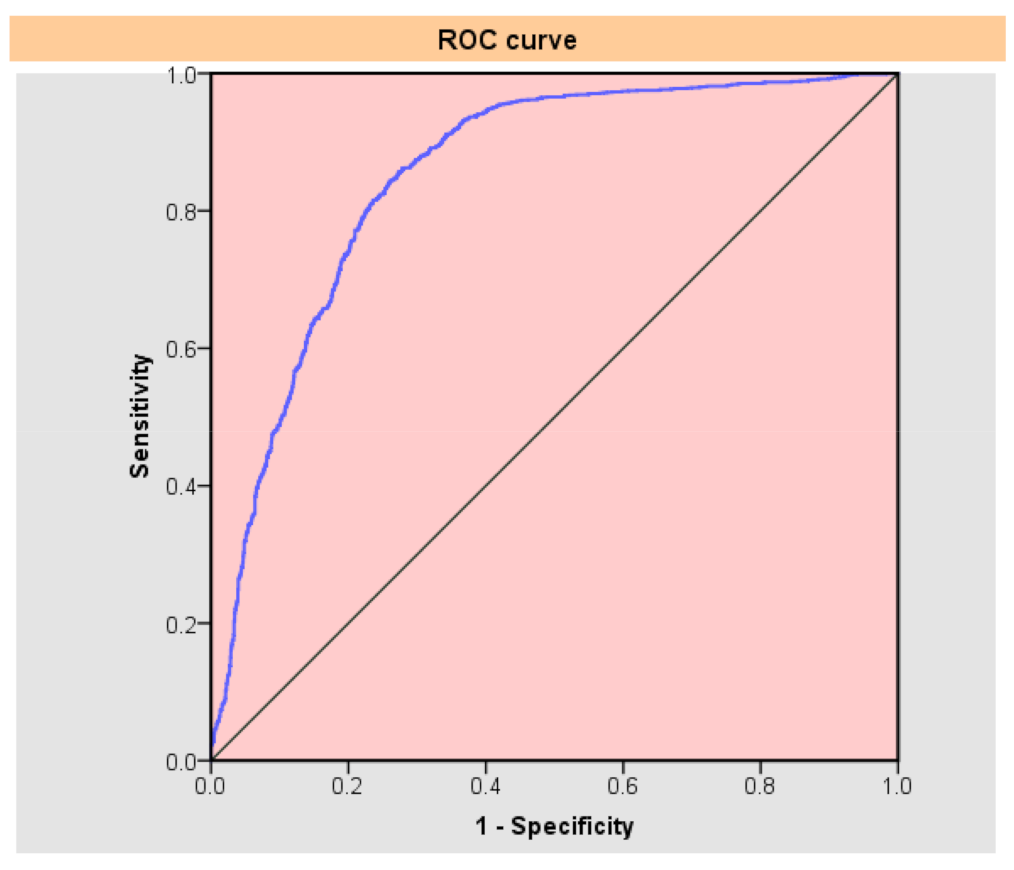
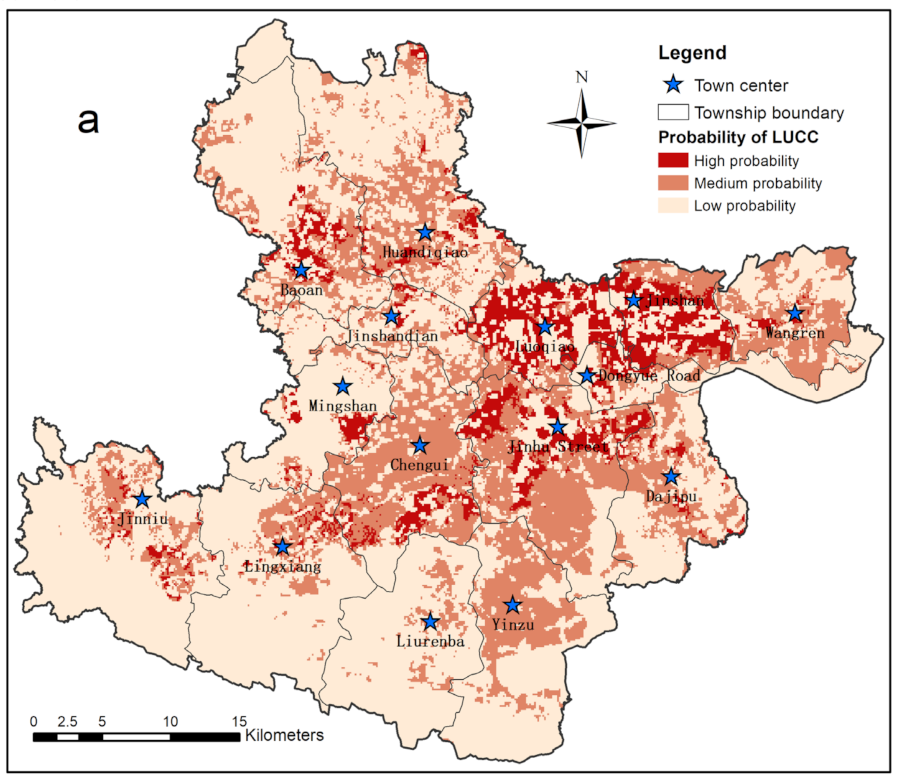
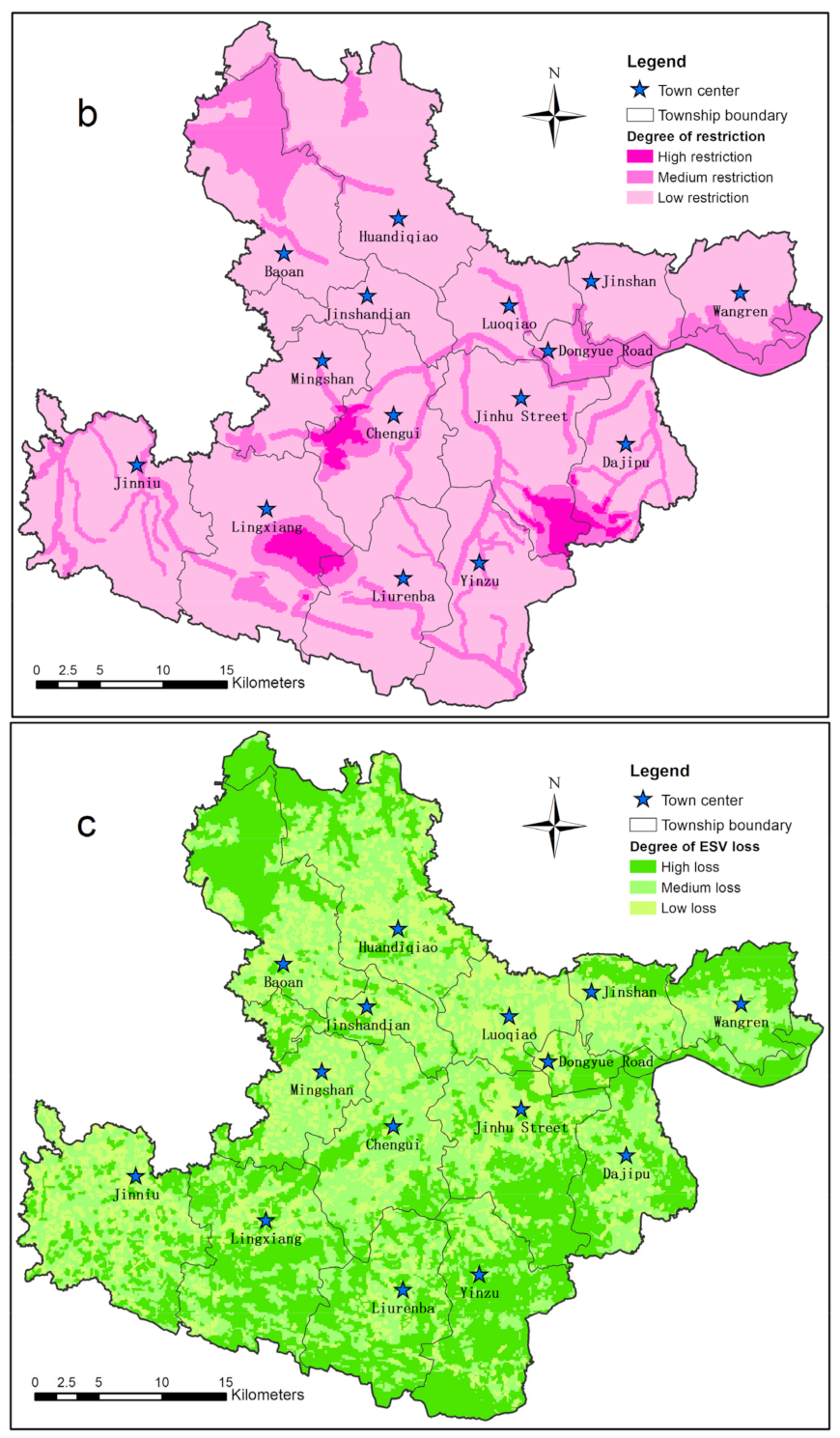
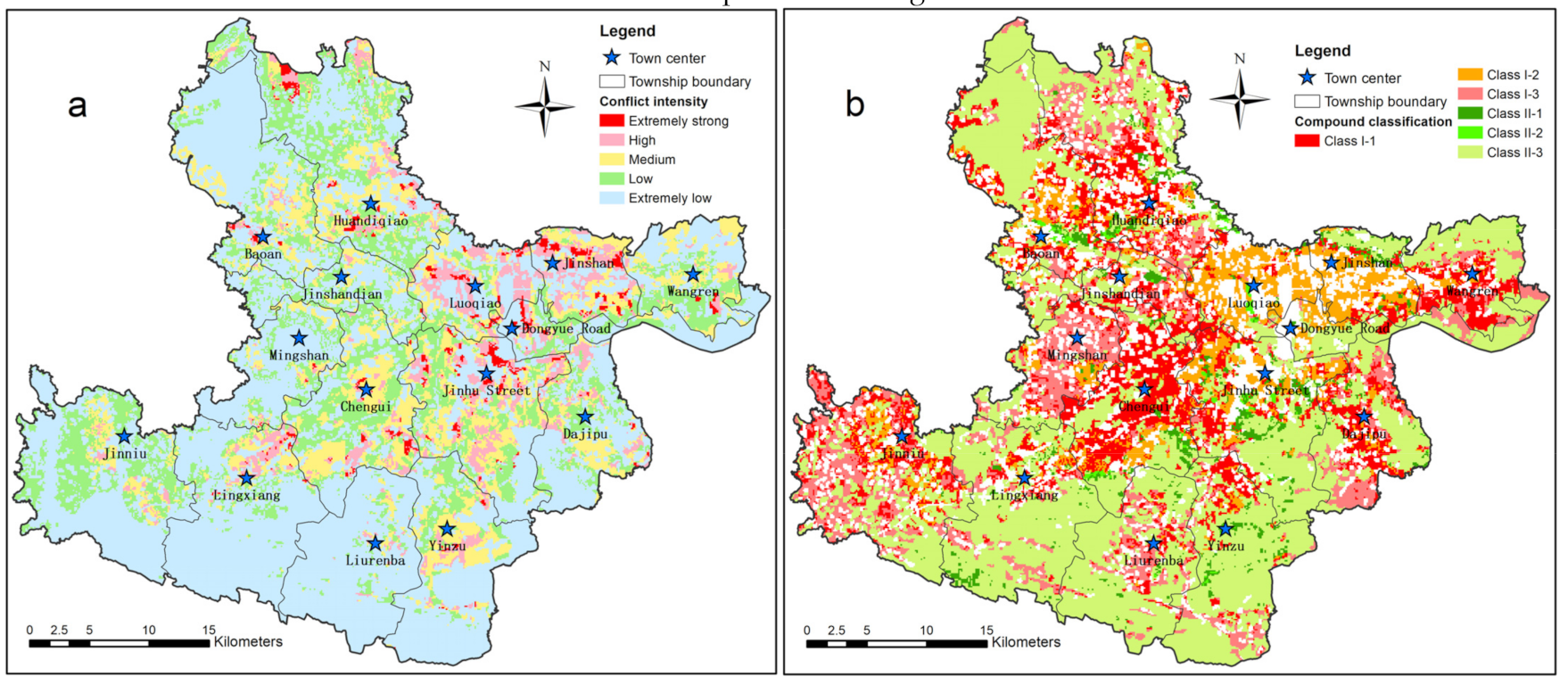

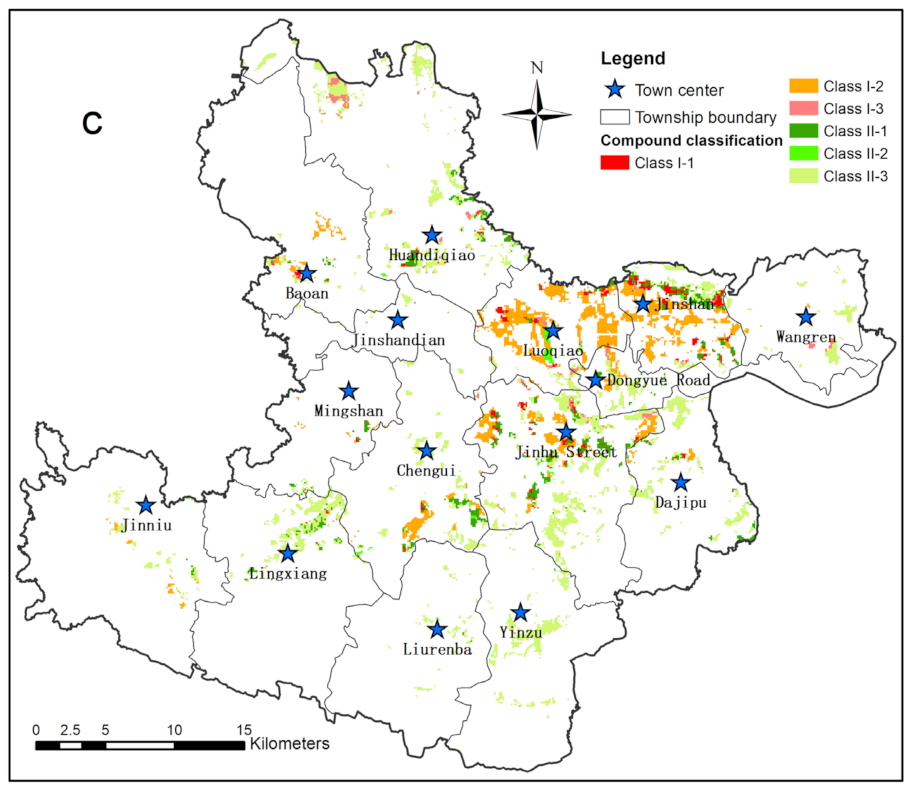
| Index Classification | Indicator Name (Variable) | Index Classification and Assignment | |||||
|---|---|---|---|---|---|---|---|
| 6 | 5 | 4 | 3 | 2 | 1 | ||
| Natural environment (X1) | Slope(X11) | 0~5° | 5~15° | 15~25° | 25~35° | 35~45° | >45° |
| Aspect(X12) | No aspect | South | Southeast or southwest | East or west | Northeast or northwest | North | |
| Elevation(X13) | 0–100 | 100–200 | 200–350 | 350–500 | 500–800 | >800 | |
| Water security degree(X14) | |||||||
| Geological disaster(X15) | |||||||
| Social economy (X2) | Mining impact(X21) | ||||||
| Central town influence(X22) | |||||||
| Road accessibility(X23) | |||||||
| Land-use type(X24) | Cultivated land | Woodland | Grassland | Waters | Construction land | Unused land | |
| Population density(X25) | |||||||
| Per capita income level(X26) | Per capita income level of each township | ||||||
| Land-Use Type | LUCC Probability(L) | Degree of Restraint(E) | Loss of ESV(C) | ||||||
|---|---|---|---|---|---|---|---|---|---|
| High | Medium | Low | High | Medium | Low | High | Medium | Low | |
| Cultivated land | 8.20 | 18.08 | 17.17 | 34.97 | 7.95 | 0.53 | 0.45 | 36.74 | 6.27 |
| Woodland | 1.52 | 10.81 | 22.97 | 28.14 | 5.31 | 1.85 | 33.16 | 1.76 | 0.38 |
| Grassland | 0.27 | 1.08 | 5.94 | 5.82 | 1.00 | 0.46 | 0.78 | 5.91 | 0.59 |
| Waters | 0.25 | 2.54 | 10.78 | 7.03 | 6.53 | 0.01 | 13.37 | 0.11 | 0.10 |
| Unused land | 0.00 | 0.14 | 0.25 | 0.35 | 0.04 | 0.00 | 0.00 | 0.00 | 0.39 |
| Total | 10.24 | 32.65 | 57.11 | 76.31 | 20.83 | 2.86 | 47.76 | 44.52 | 7.72 |
| Composite Classification System (Classification Code) | Dominant Factor | |||
|---|---|---|---|---|
| Loss Probability | Probability | Loss | ||
| Manifestations | Construction-Agricultural | I-1 | I-2 | I-3 |
| Construction-Ecological | II-1 | II-2 | II-3 | |
Publisher’s Note: MDPI stays neutral with regard to jurisdictional claims in published maps and institutional affiliations. |
© 2021 by the authors. Licensee MDPI, Basel, Switzerland. This article is an open access article distributed under the terms and conditions of the Creative Commons Attribution (CC BY) license (https://creativecommons.org/licenses/by/4.0/).
Share and Cite
Zhou, H.; Chen, Y.; Tian, R. Land-Use Conflict Identification from the Perspective of Construction Space Expansion: An Evaluation Method Based on ‘Likelihood-Exposure-Consequence’. ISPRS Int. J. Geo-Inf. 2021, 10, 433. https://doi.org/10.3390/ijgi10070433
Zhou H, Chen Y, Tian R. Land-Use Conflict Identification from the Perspective of Construction Space Expansion: An Evaluation Method Based on ‘Likelihood-Exposure-Consequence’. ISPRS International Journal of Geo-Information. 2021; 10(7):433. https://doi.org/10.3390/ijgi10070433
Chicago/Turabian StyleZhou, Hao, Yong Chen, and Ruoying Tian. 2021. "Land-Use Conflict Identification from the Perspective of Construction Space Expansion: An Evaluation Method Based on ‘Likelihood-Exposure-Consequence’" ISPRS International Journal of Geo-Information 10, no. 7: 433. https://doi.org/10.3390/ijgi10070433






